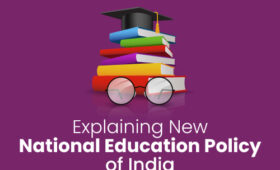The Finance Act, 2020 has introduced new provisions related to the Tax Collection at Source (TCS) that will be in effect from October 01, 2020. With the new provisions, banks, authorized dealers, and the public will learn about ways to collect Tax at Source on foreign remittances. Additionally, the provisions will also help us learn about how the Finance Act, 2020 will affect Indian students who wish to transfer funds for their education to different countries or for managing their living expenses abroad after October 01, 2020.
But first, what do foreign remittances mean?
Foreign remittances are the outward remittances or the money that is going out of India. Provisions in the Finance Act, 2020 do not apply to inward remittances.
What do the provisions under the new tax rule specify?
A TCS of 5% will be imposed on all foreign tour packages and other foreign remittances under the Liberalized Remittance Scheme (LRS) that exceeds an amount of INR 7 lakh in a financial year.
Under the Liberalized Remittance Scheme (LRS), the Reserve Bank of India specifies that an individual is allowed to send an amount of up to USD 2,50,000 within a financial year from April to March.
According to the Finance Act, 2020, a Tax Collected at Source (TCS) will be charged on any foreign remittance that is made through LRS. It will also include the amount of money that has been transferred to any foreign university as payment of tuition fee, admission fee or living expenses.
In simple terms, this means that from October 01 onwards, Indian students who are studying abroad will have to pay TCS on any foreign remittance that exceeds the specified limit. However, this imposed TCS will not be applicable as the TDS (Tax Deducted at Source) has already been applied. Furthermore, it should be noted that this new Tax does not apply to foreign educational institutions.
What are the new provisions of TCS u/s 206 (1G)?
The new provisions of TCS include:
- Tax Rates:
A 5% TCS will be levied on foreign remittances above the stated limits if the Permanente Account Number (PAN) or Aadhaar details of the remitter are provided.
In contrast, if either of the details is not available, the TCS will be charged at a rate of 10%, higher than the normal rate.
Any remittance that is made on education loans for education in other foreign countries, a 0.5% rate of TCS will be applicable above the stated limits.
- Applicability of Tax Collection at Source:
Under LRS, resident individuals, including minors, will be liable to remit up to USD 2,50,000 for each financial year to another country. This amount will be made on any investment, or living expenses, or expenses related to studies, travelling, medical needs, etc.
The TCS will apply to foreign remittances only if the total amount exceeds INR 7,00,000 in a financial year. If the amount that is remitted is below INR 7,00,000, no TCS will be levied.
How does this new tax rule impact the Indian students who are seeking an education in foreign countries?
Like everything else, this new tax rule on foreign remittance will broadly impact Indian students who wish to have an education abroad.
- There will be an increased need to set a budget for TCS while doing any financial planning for foreign education. This is because the overall cost of pursuing such an education will increase due to TCS.
- Students who have been awarded scholarships, or have received financial support for their foreign education will also be required to pay TCS on their financial aid.
- The applicability of TCS will increase the number of students seeking education loans since the TCS in such a case will be at a lower rate of 0.5%.
- If their visas are refused, students will be required to claim the TCS amount as a refund against their tax liability.
- The amount of paperwork to apply to foreign schools will now be increased since the process of fund transfer will be a longer and more time-consuming process.




